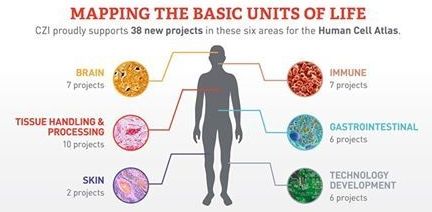
Get the latest international news and world events from around the world.



Merging Humans with Machines
I just received the video of the Eureka! comedy show I was on, which focuses on science. The 90-minute show was on #transhumanism (and a bit on my Governor run). This may be the first (or one of the first) live comedy shows that focused entirely on transhumanism. Check it out!
Interested in becoming post-Human? What if it promised you eternal six-packs? Still on the fence?
Check out Eureka! featuring transhumanist Zoltan Istvan (http://www.zoltanistvan.com/) alongside guest comedians Chris Conatser (Learn from Me Comedy) and Allison Page (Killing My Lobster) and your hosts Allen Saakyan & Kevin Whittinghill.
Zoltan’s detailed bio: Zoltan Istvan is an American transhumanist, journalist, entrepreneur, and Libertarian futurist. Formerly a reporter for the National Geographic Channel, Zoltan now writes futurist, transhumanist, libertarian and secular themed articles for major media, including Vice’s Motherboard, Wired, The Huffington Post, TechCrunch, and Newsweek. Zoltan regularly appears on television and video channels discussing futurist topics. He is one of the world’s most influential transhumanists and believes transhumanism will grow into a mainstream social movement in the next decade. He is the author of The Transhumanist Wager, a philosophical science fiction novel. In 2017, he announced his intent to run for Governor of California in the 2018 election as Libertarian.
To keep up with our show visit: http://www.eurekacomedy.com/
Liquid metal brings soft robotics a step closer
Scientists have invented a way to morph liquid metal into physical shapes.
Researchers at the University of Sussex and Swansea University have applied electrical charges to manipulate liquid metal into 2D shapes such as letters and a heart.
The team says the findings represent an “extremely promising” new class of materials that can be programmed to seamlessly change shape. This open up new possibilities in ‘soft robotics’ and shape-changing displays, the researcher say.


Chemical treatment improves quantum dot lasers
One of the secrets to making tiny laser devices such as opthalmic surgery scalpels work even more efficiently is the use of tiny semiconductor particles, called quantum dots. In new research at Los Alamos National Laboratory’s Nanotech Team, the ~nanometer-sized dots are being doctored, or “doped,” with additional electrons, a treatment that nudges the dots ever closer to producing the desired laser light with less stimulation and energy loss.
“When we properly tailor the compositional profile within the particles during their fabrication, and then inject two or more electrons in each dot, they become more able to emit laser light. Importantly, they require considerably less power to initiate the lasing action,” said Victor Klimov, leader of the Nanotech team.
In order to force a material to emit laser light one has to work toward a “population inversion,” that is, making the number of electrons in a higher-energy electronic state exceed the number that are in a lower-energy state. To achieve this condition normally, one applies an external stimulus (optical or electrical) of a certain power, which should exceed a critical value termed the “optical-gain threshold.” In a recent paradigm-changing advance, Los Alamos researchers demonstrated that by adding extra electrons into their specially designed quantum dots, they can reduce this threshold to virtually zero.

Yes, people do not like to admit it which is a serious barrier to acknowledging we should be doing something about it
How did you come to accept that aging was a problem?

A Healthy Aged Gut Is Similar to a Healthy Young Gut
The topic of the gut microbiota is increasingly in the news of late, and its connection with chronic age-related inflammation, known as inflammaging, is becoming increasingly clear.
What is the microbiota?
The microbiota describes the community of symbiotic and pathogenic microorganisms that live in and on all multicellular organisms, and it includes bacteria, archaea, protists, fungi, and viruses. In particular, the gut microbiota and its role in aging and disease have increasingly become of interest to researchers in recent years.
When Should We Edit Human Genes? What You Need to Know
There’s a difference between editing genes in a person’s somatic cells and germline cells.
Editing somatic cells, which are differentiated (e.g., skin cells) and non-reproductive, impacts them alone. In contrast, editing germline DNA means changes are passed along to the next generation during reproduction. It’s no minor distinction.
Right now, the cautious consensus around gene editing in the US and parts of Europe is that it is okay to do therapeutic gene editing in a patient’s somatic DNA, meaning DNA that only exists in that individual and does not get passed on. But some believe the cautious consensus may be too cautious.